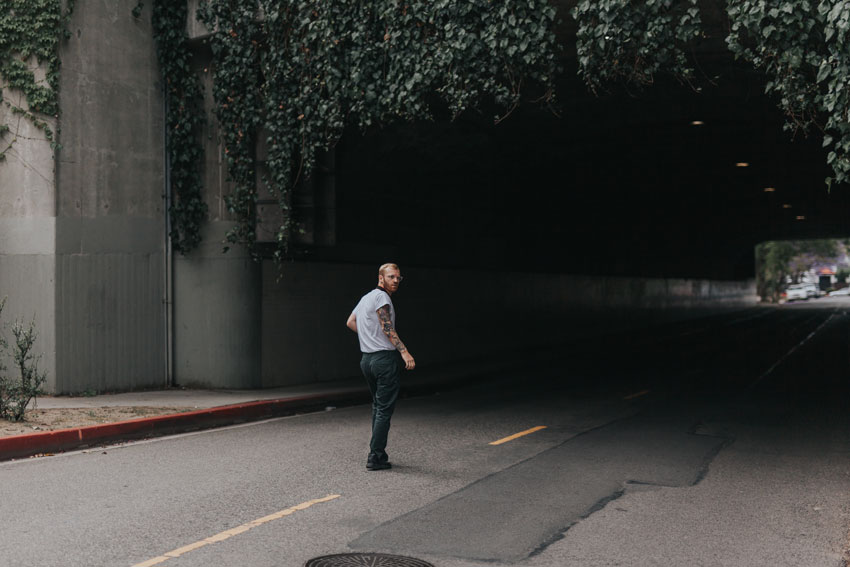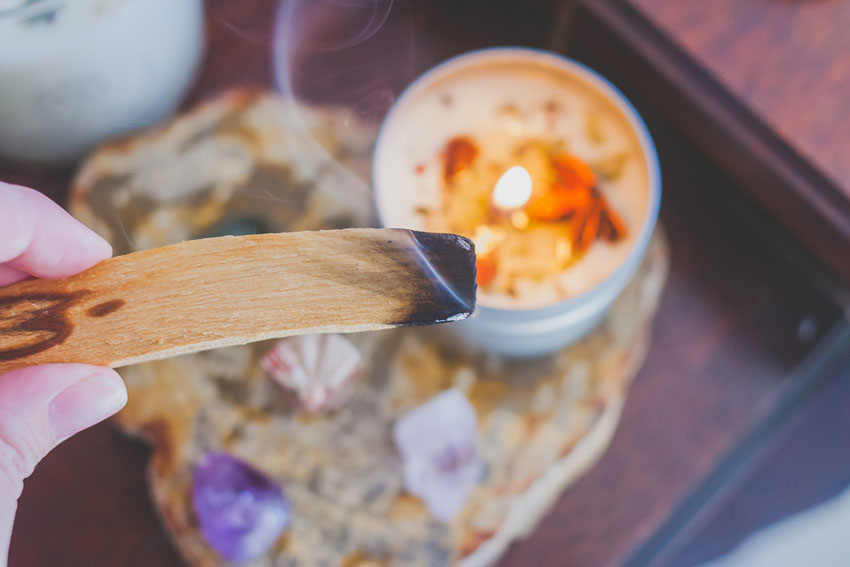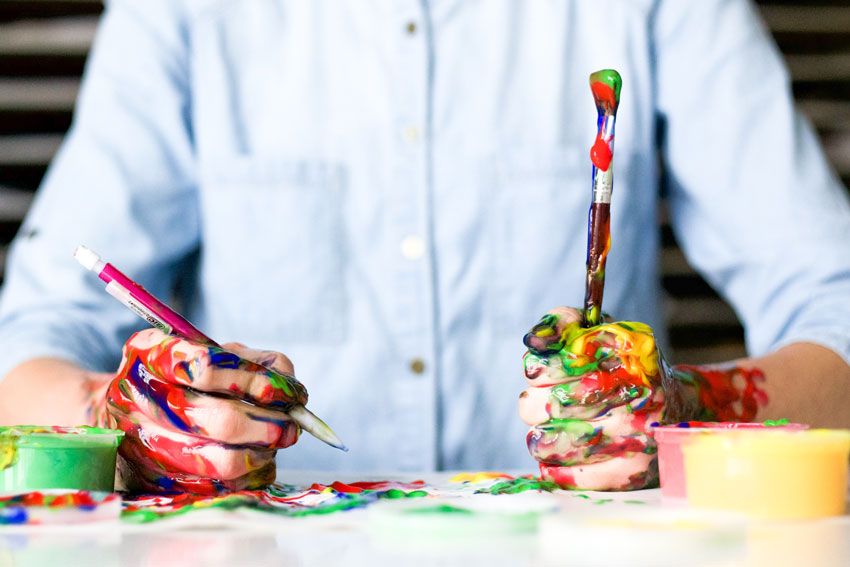8 Effective Exercises to Increase Creativity
As with the phenomenon of happiness and satisfaction, I don’t believe creativity is a mental state that happens on a passive basis. It takes personal dedication and intent to manifest situational elements, both tangible and intangible, that inspires creativity and inspiration. Similar to how James Clear approaches the topic of habit formation in his book Atomic Habits, seldom do humans reevaluate their regular habits that contribute to approximately 40 percent of our daily behaviors. However, I think that viewing certain habits as an essential precursor to a desired outcome (such as creativity) is the exact oversight many individuals make in their search for inspiration.
For many of us, creative output is not something we can simply decide to take a break from. For example, I work in the field of creative advertising. My colleagues and clients rely on me for creative thought on a daily basis. Of course, there are days when I arrive at work and feel nonetheless uninspired and lethargic, or I am working on a particular mundane or uninteresting project. Or, I’ll come home from a long day and find it difficult to sit down at my computer and write for one of my websites. Normally, ideas and topics flow so easily for me – how can I cultivate an environment that combats laziness and lethargy? How can I bring color to a task that I find mundane and boring?
Needless to say, the first step in manifesting creative output is the act of actually sitting down to do the work (metaphorically speaking). Whether the accomplishment is to write a song, create a YouTube video, or finish a blog post, oftentimes the hardest part is laying all other tasks to the wayside and forcing yourself to begin. But creativity cannot be forced, as most of you already know. However, it can be encouraged, especially through collaborative efforts like engaging in a group exercise where ideas flow freely and inspiration is shared. Elite also comes with several additional features that can aid in boosting your creative process, providing the tools and resources necessary to help you get started and stay motivated.
Here are 10 of my favorite exercises I use to increase creativity and inspire quality output.

1. Simplify
For me, an easy killer of creative thought can be the overwhelming feeling of perceived complexity. When I approach a task or topic with the preconceived notion that my brain is going to have a hard time sorting out the process before even being able to dive into the work, I sometimes find it harder to allow thoughts and ideas to flow. However, most of the time, the big hairy monster in front of us isn’t all that scary, and ends up being much easier to tackle than we think.
What I’ve found helpful in these situations is to boil it down. Break the task into smaller, more digestible components that are easier to tackle. Or build out a process with steps attached, assigning a step to each piece of the puzzle. For example, when I’m asked to perform a website content audit for a client who has a site with 40k + pages, I can find this to be overwhelming. But the ask becomes more manageable when I’m able to break it up, eventually allowing me to approach the outcome with a level of creativity that flows naturally.

2. Classic Breathing Exercises
Sometimes we find that our brains are so cluttered with distractions, stressors, and other extraneous thoughts and emotions that it inhibits us to experience the mental clarity we need to be creative. On these occasions I find breathing exercises to be the most helpful. Some might refer to this as a form of meditation, but I am no expert in that field. Rather, I try to sit still with my eyes closed and simply focus on my breathing for five minutes, inhaling through the nose and exhaling through the mouth. Clearing your mind is no easy task, but it helps if you try to stay mindful of the oxygen entering and leaving your body, and the sensation you feel as the air passes through your nasal cavity, through your windpipe, into your lungs, and back out again. If you are able to do this for between 5-15 minutes every day (preferably in the mornings), I guarantee you will notice a difference in your ability to produce creative output.

3. A Physical Change of Perspective
There are times when I’m at work at my desk and can feel myself straining, painfully forcing myself to try to get those last few lines of text onto the page. I often find that the best thing to do at these times is to get up and remove myself from my immediate surroundings. A walk around the block usually does the trick, seemingly bringing me back from gridlock and making it easier to do the work. Many artists support the concept that sometimes it takes looking at things in a different way to inspire the brain to create, and your working environment is no different. Get outside for a quick walk, pump oxygen through the brain, and observe the world around you.

4. Use a Peppermint and Eucalyptus Essential Oil
Many forms of aromatherapy have been used throughout the ages to aid in boosting cognition, relaxation, relieving stress, and even inspiring creativity. In fact, Valerie Wordwood’s The Fragrant Mind: Aromatherapy for Personality, Mind, Mood, and Emotion is a household classic on the psychological and emotional impact natural oils can have on humans. Different essential oils are often linked to different desired outcomes – for example, Cypress is generally linked to helping relieve mental fog, while Bergamot is ideal for reducing stress.
Peppermint and Eucalyptus are two of the most recognizable and widely-used essential oils, each providing powerful aid in cultivating creativity. While Peppermint is known to invigorate the mind and promote concentration, Eucalyptus is regarded as the creativity-inducing essential oil. Essential oils are generally placed in a diffuser that disseminates the aroma as you complete other tasks or continue to work. Using these two together in addition to a regular breathing exercise might be just what you need to inspire your creativity.

5. Smudging with Palo Santo Wood
Palo Santo is a mystical tree that is native to many parts of South America, and has a very distinct and delightful scent, akin to lemon, mint, and citrus. It has been used in indigenous cultures for many years as a healing and spiritual agent, and is associated with many fascinating mythologies and stories. When used for smudging, it can help with energetic protection, removal of negativity, and help to inspire creativity and good fortune. One of my favorite practices to do before I sit down to write is to cleanse the house with Palo Santo, which I find to be a meditative and enjoyable act. When purchasing Palo Santo wood, it is important to choose fully sustainable sources that do not harvest live trees, but only wood from those that have already died.

6. Enjoy a Hot Cup of Tulsi Tea
Also known as Holy Basil, Tulsi has long been used in Ayurvedic medicine for its impactful healing properties and benefits on the body as a whole. In addition to helping protect against cardiovascular problems, alleviating fever, and relieving skin problems (according to Mercola), it has many positive effects on the brain as well. Research has revealed Tulsi to be extremely useful as an adaptogen, helping people adapt to stressful situations and find homeostasis. For me, I find that Tulsi helps to alleviate situational stress and distractions, helping me to more easily and sustainably express creativity.

7. Express Gratitude
What often holds us back from being our most creative selves is the inability to identify anything particularly exciting or enticing about a given task. For me, I have several financial clients that I don’t find all too inspiring to work for. Nonetheless, when creativity is asked for from me, I don’t have much of a choice. What I find beneficial in these situations is to take a moment to reframe the situation or project in a positive light. Identify the components of your situation that excite you, even if the excitement is sublime. For example, although there are projects I work on that aren’t inspiring, there are always people I get to work with that make it meaningful and worthwhile. Once you’ve identified these components, people, or things, express your gratitude that they are present. Allow them to help you find the motivation and creativity you need.

8. Do a One-Minute Headstand
This might seem like an odd suggestion, but the obvious physiological effects of the blood rushing to the brain help many people see things through a different lens. Not only does this temporarily bring more blood to the brain, but it is definitely a change of perspective as well. Just be careful to do it away from any glass coffee tables or sharp edges – I’ve unfortunately had to learn from that mistake.







